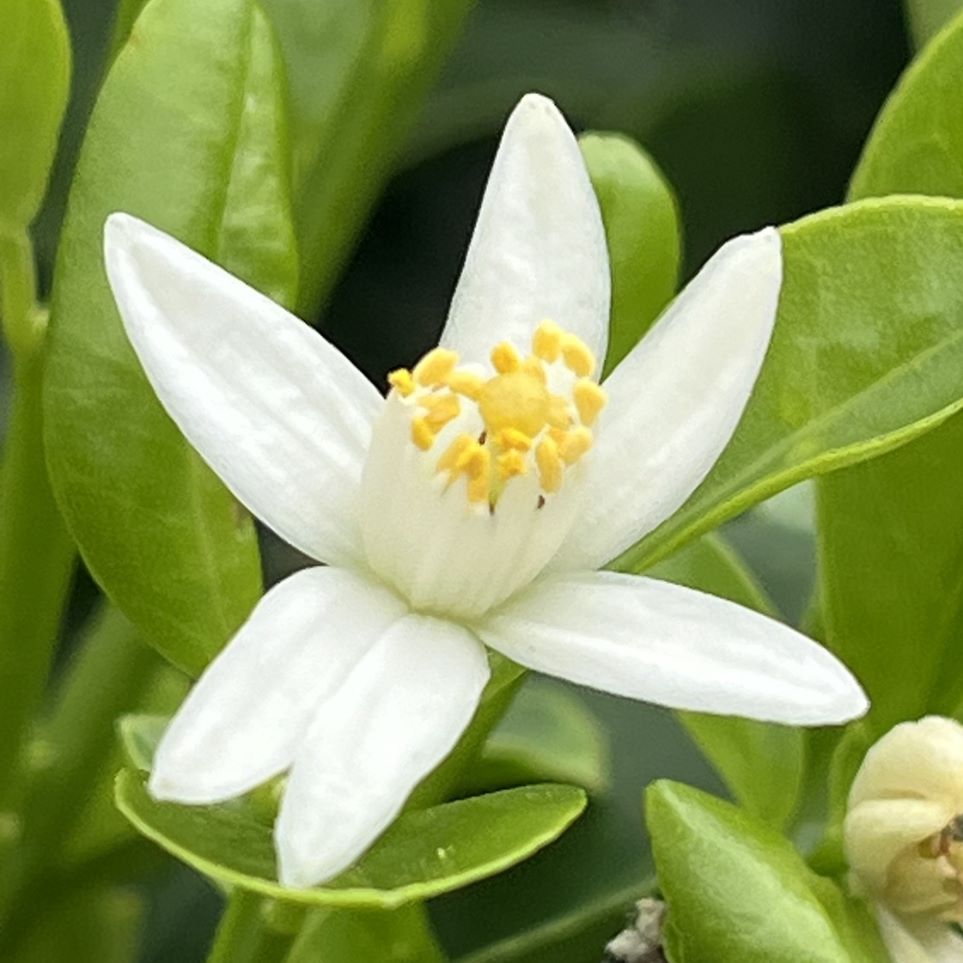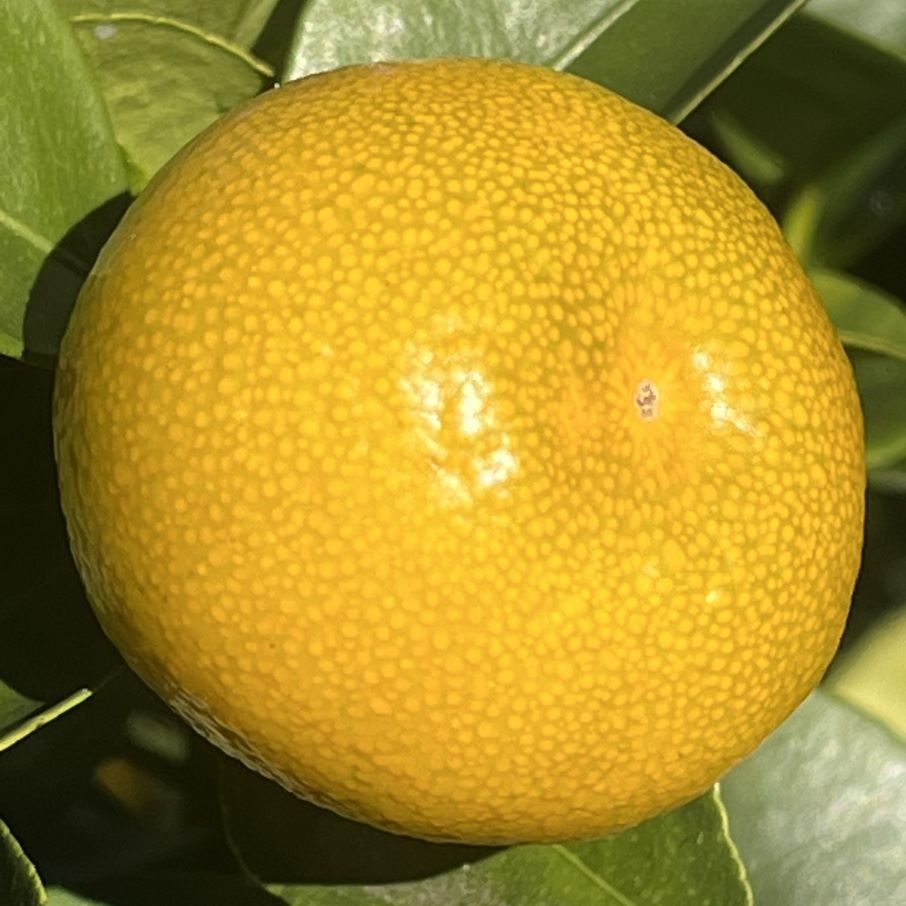キンカンは食用、薬用、観賞用に、庭植えや鉢植え、樹園地で栽培。清々しい白色の花が爽やかに香り、灰色の空気に黄色の果実を灯します。
Kumquat is cultivated in gardens, pots, and orchards for food, medicine, and ornamental purposes. The fresh white flowers have a refreshing scent. The yellow fruit lights up the gray air.
【仮名】キンカン, ヒメタチバナ, キンキツ
【和名】金柑, 姫橘, 金橘
【英名】Kumquat, Cumquat
【学名】Citrus japonica
【誕生】01/ 29
【開花】06, 07, 08, 09, 10月
【花色】White
キンカン
キンカンの概要

キンカンはミカン科の常緑低木です。原産地は中国中南部で、日本へは古くに渡来。食用、薬用、観賞用に庭植えや鉢植えで育てられます。営利用には和歌山県、高知県、宮崎県、鹿児島県などの樹園地で栽培。清々しい白色の花が爽やかに香り、灰色の空気に黄色の果実を灯します。
キンカンの名前

キンカンの和名は美しい果色に由来し、「金色の蜜柑」という意味。小さな果形から「姫橘」という別名もあります。英名カムカットは中国名「金橘」の広東語読みに由来。ラテン語の属名シトラスはアフリカ由来の「シトロンの木」、種小名ジャポニカは「日本の」という意味です。
キンカンの姿形

キンカンは枝にトゲのあるものとないものがあります。葉は革質の楕円形で互生。裏面が白緑色で、葉柄に小さな翼があります。花は真夏と真冬を除く四季咲き性で、花弁が5枚。雄しべは16~20本が4~5束に合着し、雌しべを囲みます。果実は橙黄色の球形、種子は淡緑色の卵形。
キンカンの種類

キンカンは「丸金柑」(丸実金柑)とも呼ばれる酸味の強い品種。一方、トゲが少なく、扱いやすい「長金柑」(長実金柑)、甘味が強く、生食に向く「寧波金柑」(明和金柑)、果実が大きく、加工に向く「長寿金柑」(福州金柑)、丈が小さく、盆栽に向く「豆金柑」もあります。
キンカンの利用

キンカンの果実は果皮に甘味と苦み、果肉に酸味があります。果皮に浅く切れ込みを入れて水から茹で、砂糖を加えれば甘露煮に。茹でた果実を刻んで濾し、砂糖を加えて煮詰めればジャムになります。薬用には解熱や咳止めのほか、焼酎に漬けたものが疲労回復や冷え性の改善にも。
Kumquat

Kumquat is an evergreen shrub of the Rutaceae family. It is native to central and southern China and was introduced to Japan a long time ago. It is cultivated in gardens and pots for food, medicine, and ornamental purposes. For commercial use, it is cultivated in orchards in Wakayama, Kochi, Miyazaki, and Kagoshima prefectures. The fresh white flowers have a refreshing scent. The yellow fruit lights up the gray air.
The Japanese name of Kumquat comes from the beautiful fruit color and means “golden mandarin orange.” It is also known as “cute Citrus” due to its small fruit shape. The English name comes from the Cantonese pronunciation of the Chinese name. The Latin genus name Citrus means “citron tree” originating from Africa, and the specific name japonica means “Japanese”.
Kumquat comes in two varieties, with and without thorns on the branches. The leaves are leathery, oval, and alternate. The underside is whitish-green, and the petioles have small wings. The flowers bloom all year round except midsummer and midwinter, with five petals. There are 16 to 20 stamens that are joined together in 4 to 5 bundles and surround the pistil. The fruit is orange-yellow spherical, and the seeds are pale green and oval.
Kumquat is a standard variety with a strong sour taste. On the other hand, there are also varieties with fewer thorns, “Margarita”, which is easy to handle, “Crassifolia”, which has a strong sweetness and is suitable for eating raw, “Obovata”, which has large fruits and is suitable for processing, and “Hindsii”, which is short and suitable for bonsai.
Kumquat fruit has a sweet and bitter skin and a sour flesh. If you make a shallow cut in the skin, boil it in water, and add sugar, it becomes simmered in syrup. If you chop up the boiled fruit, strain it, add sugar, and boil it down, it becomes jam. It has medicinal uses as a fever reducer and cough suppressant, and if you soak it in shochu, it helps to recover from fatigue and improve poor circulation.



